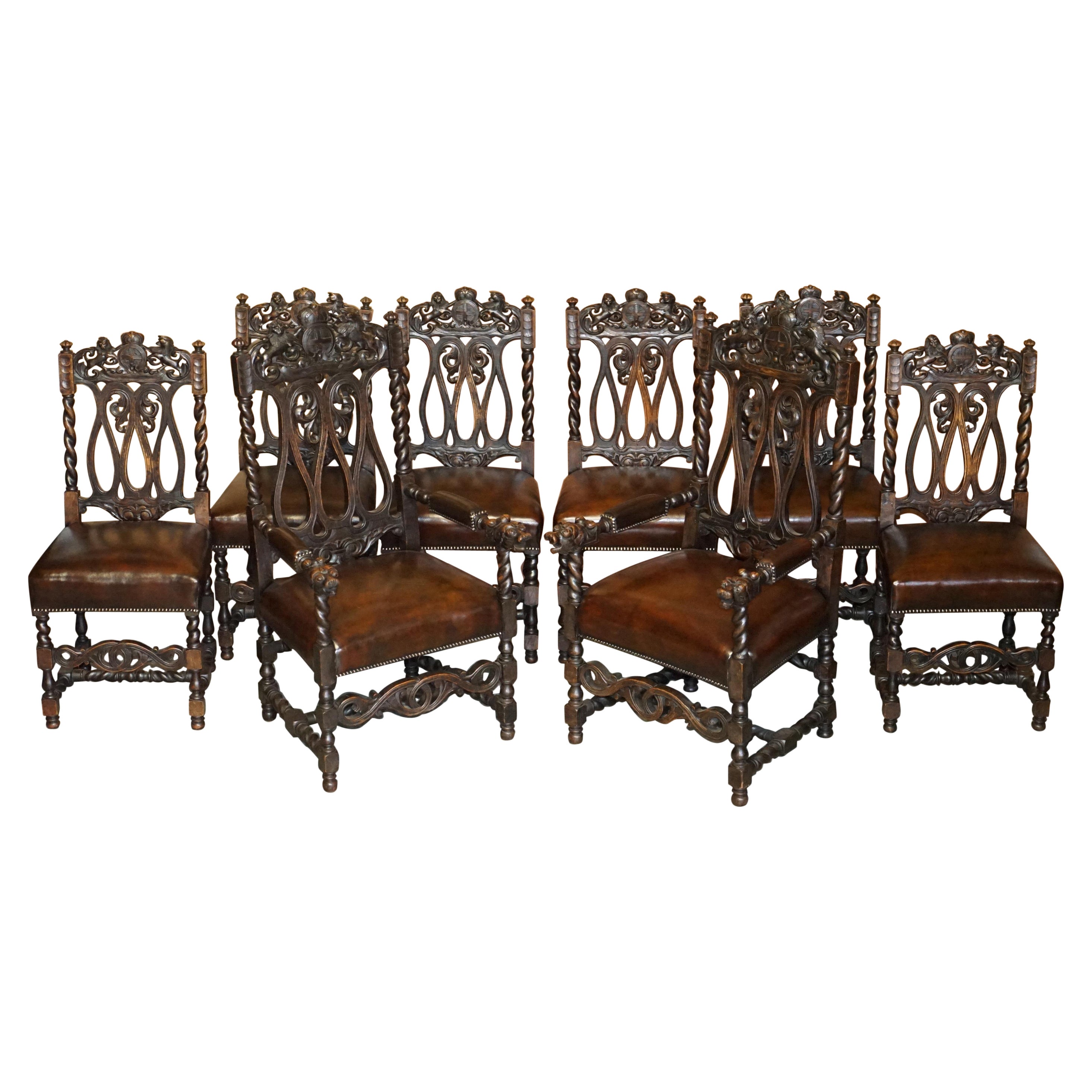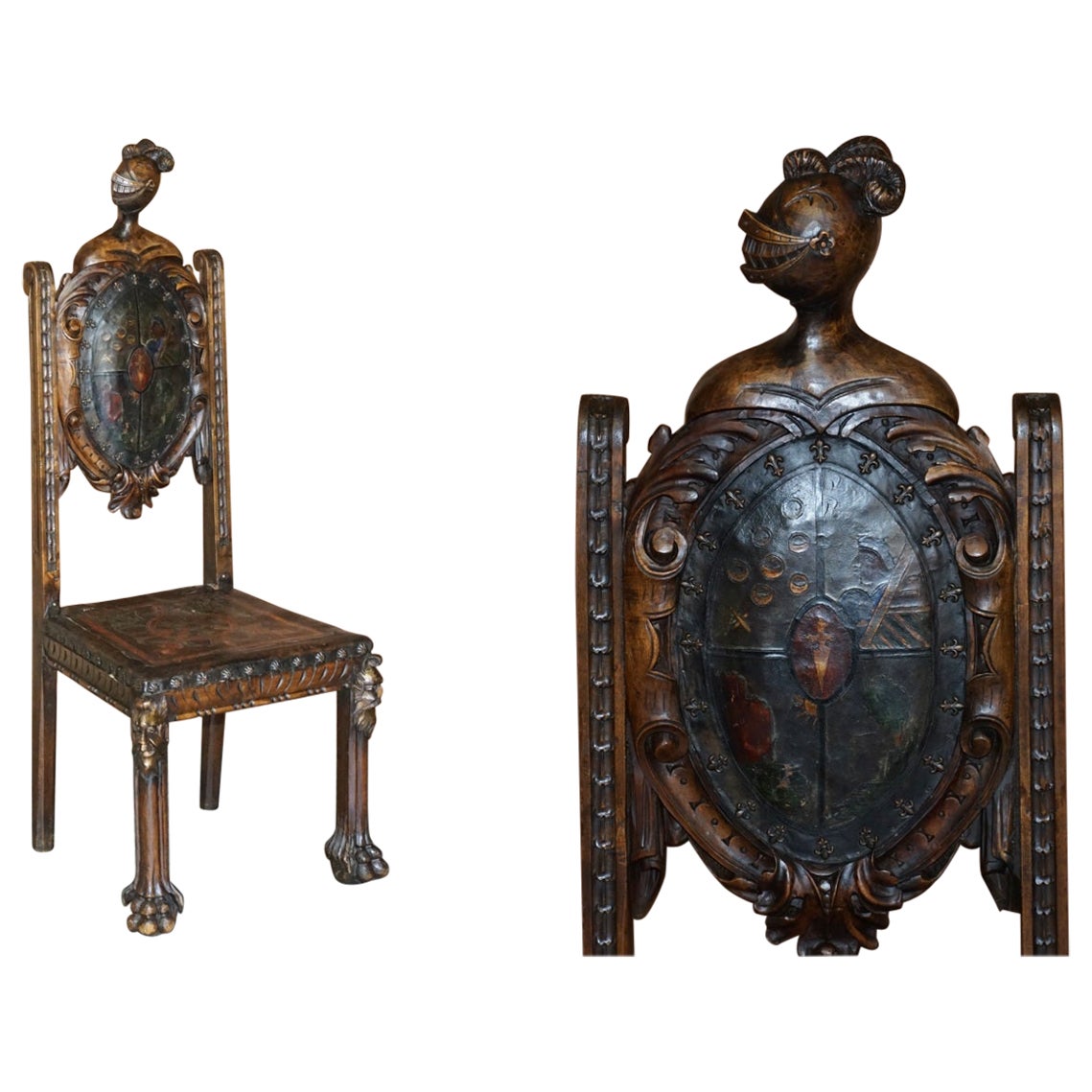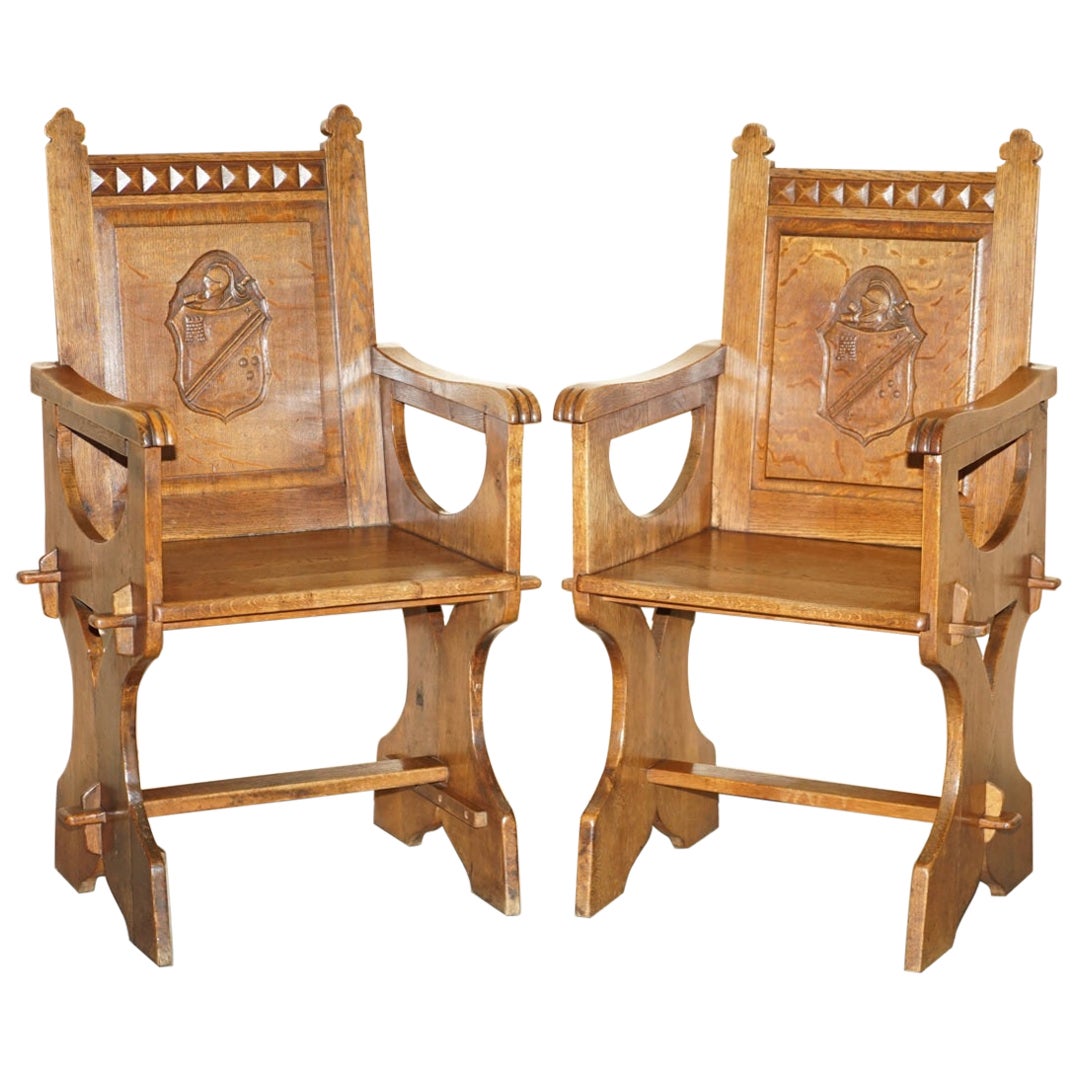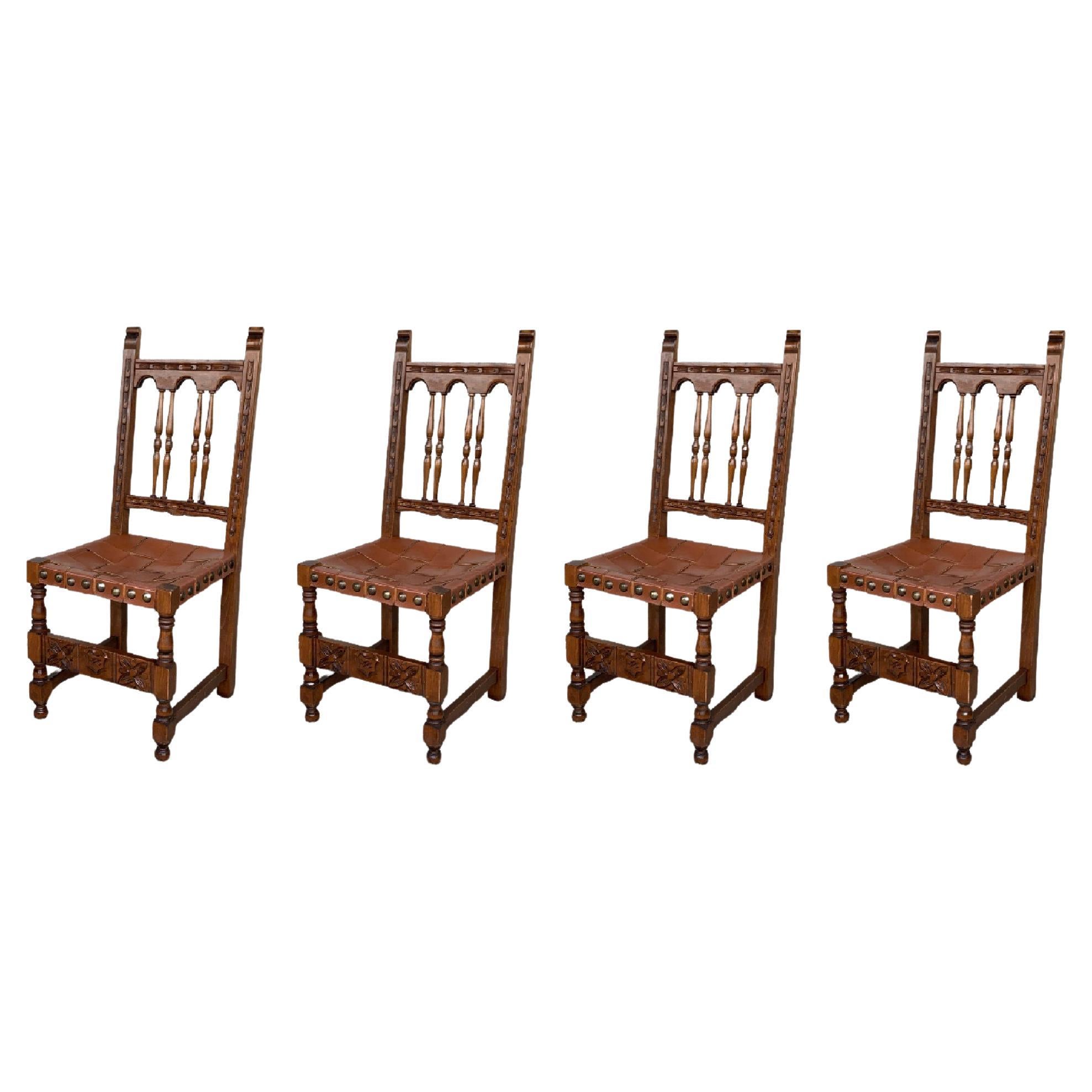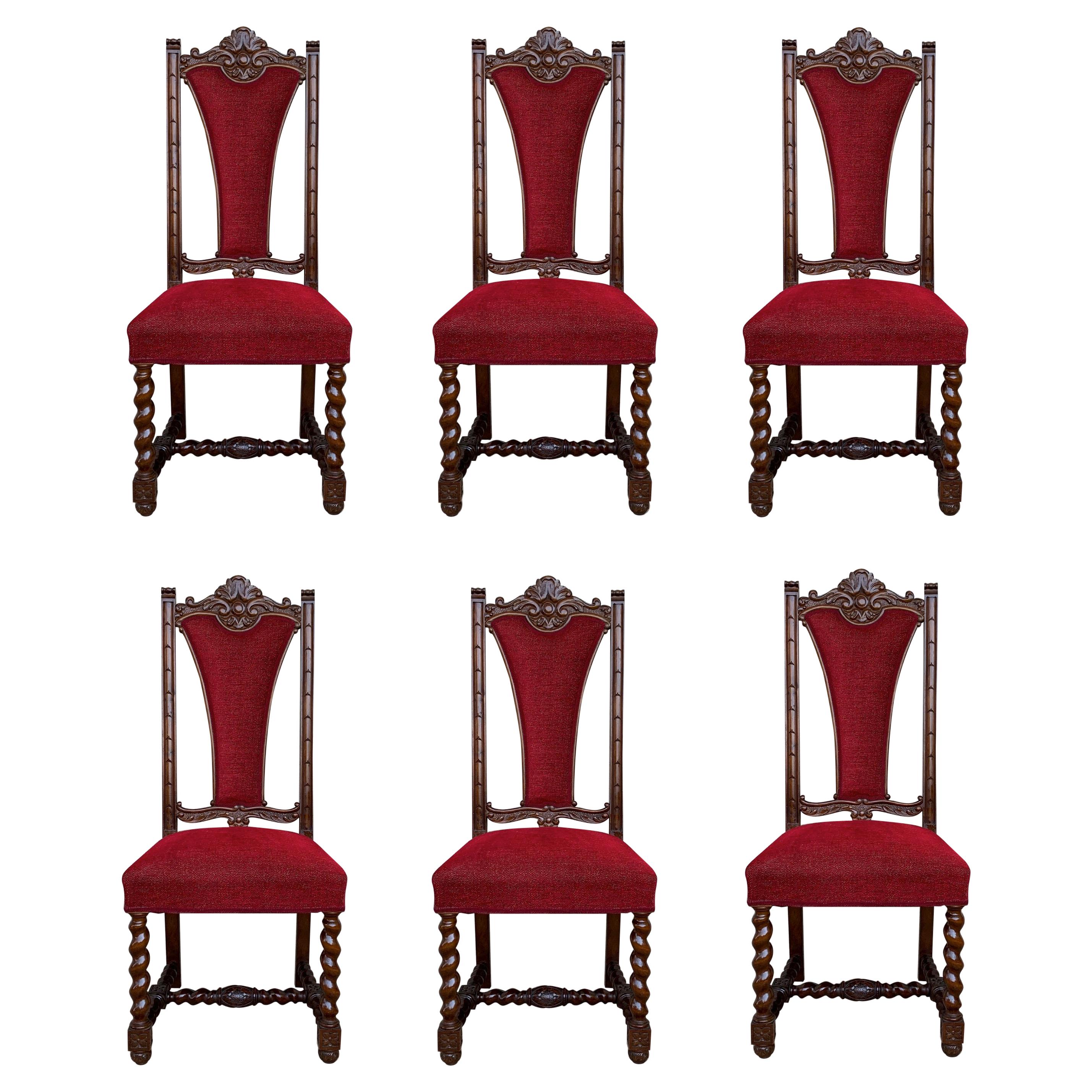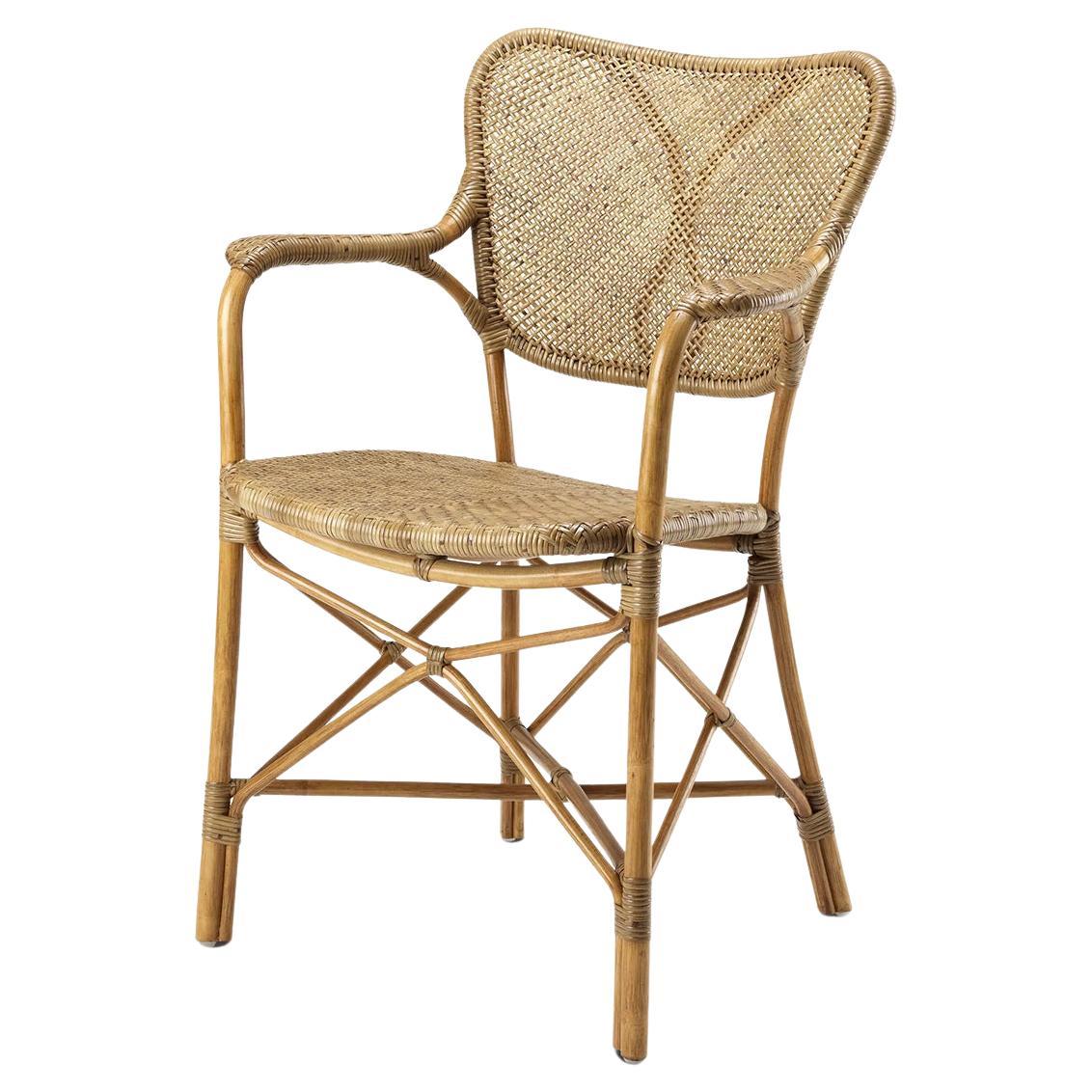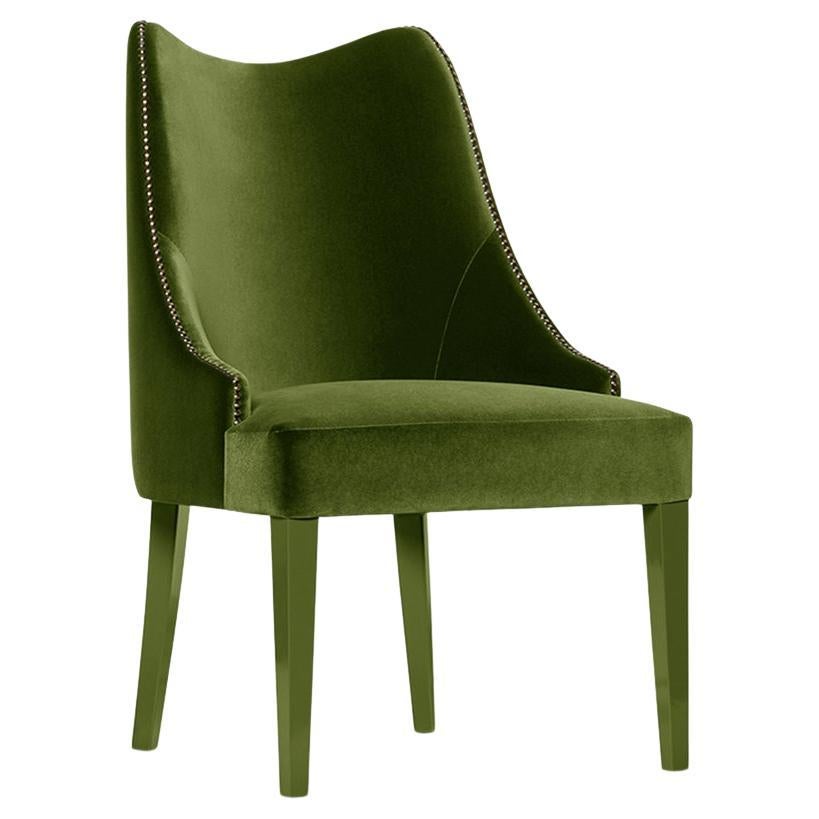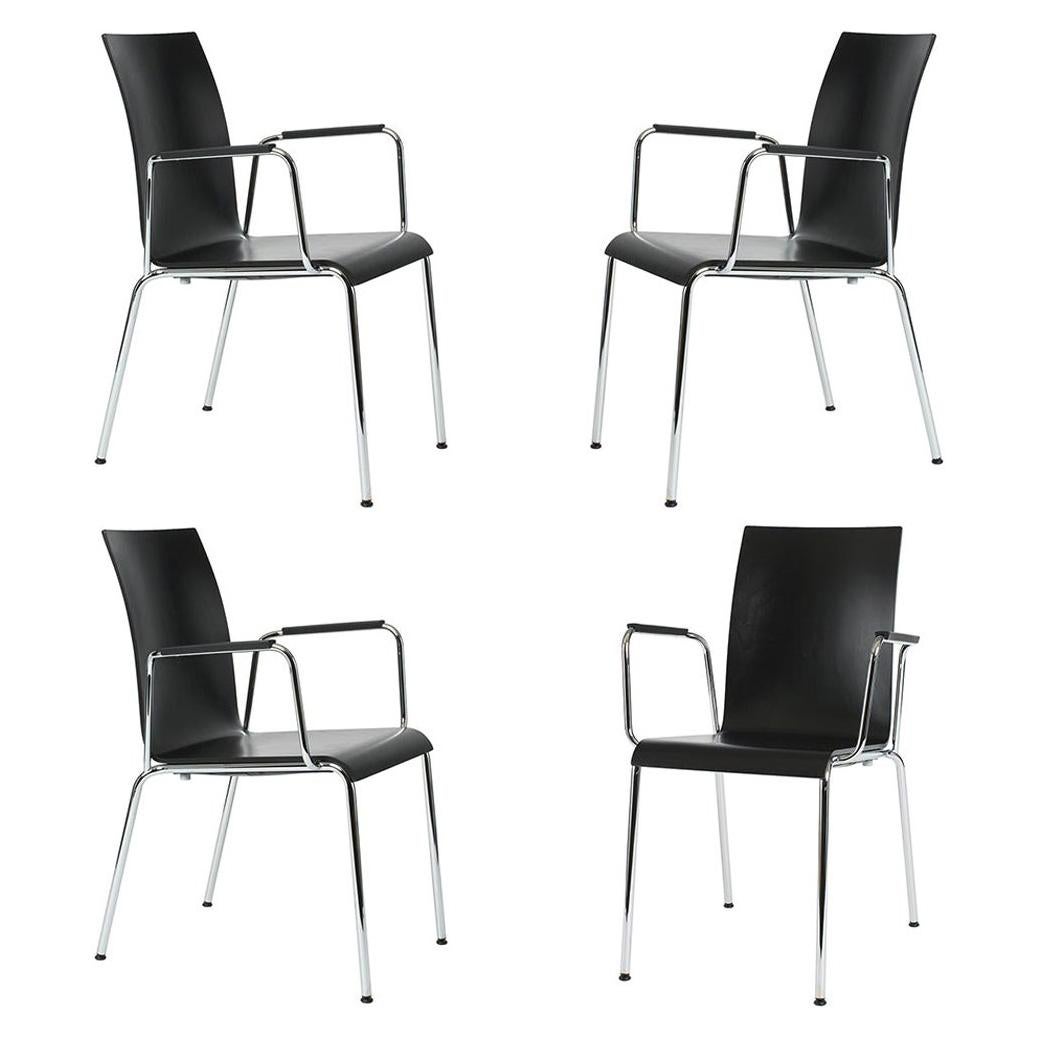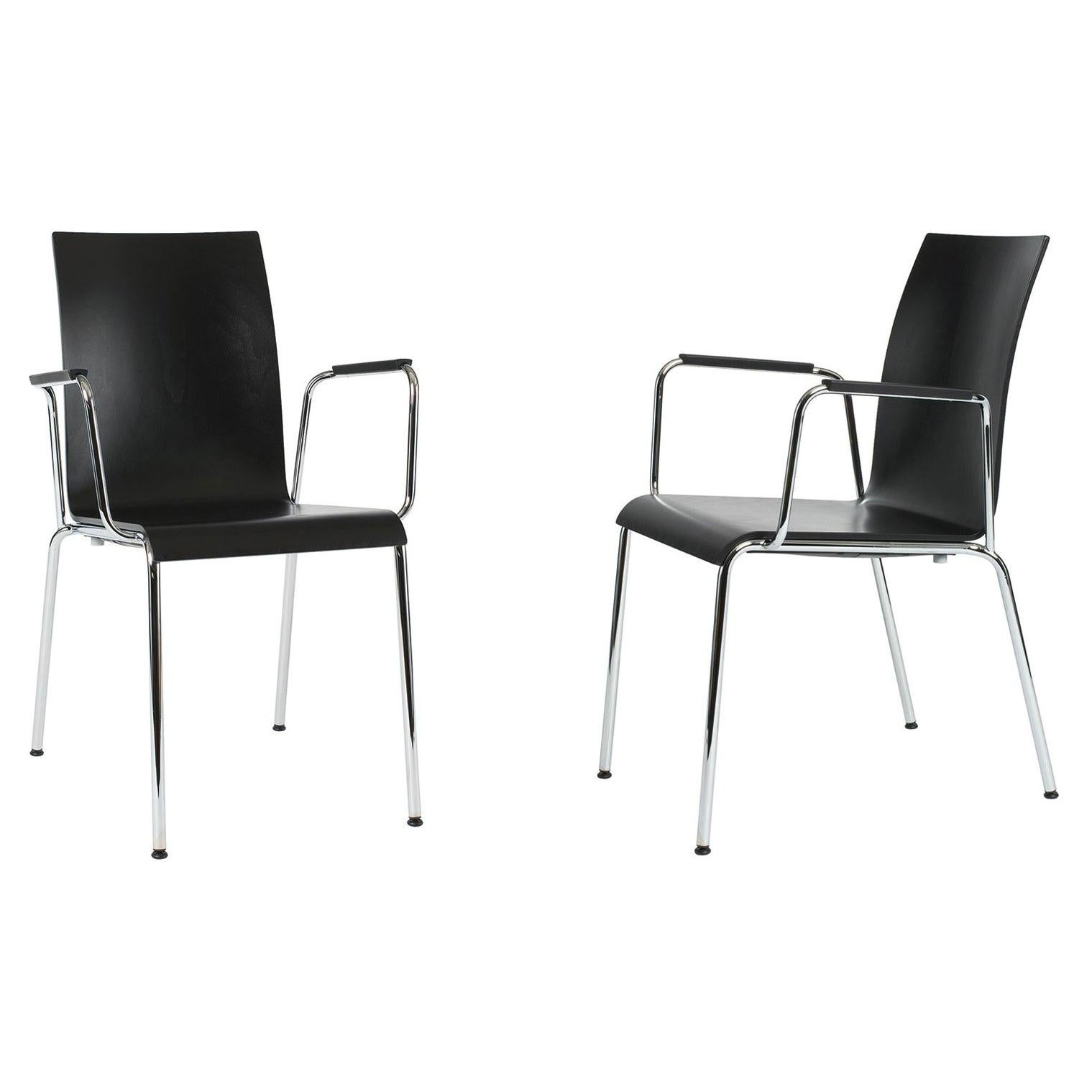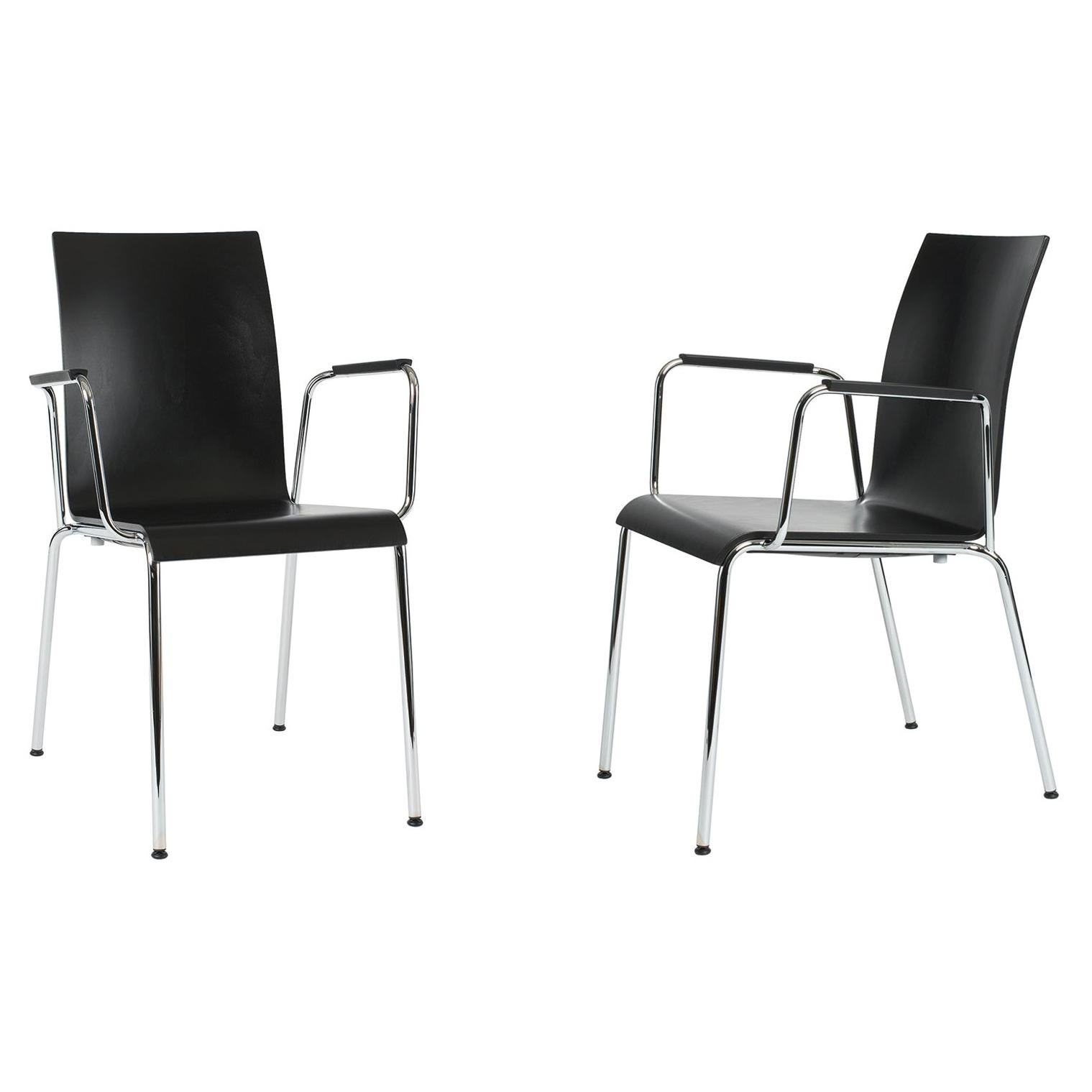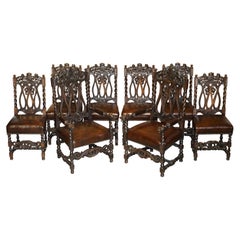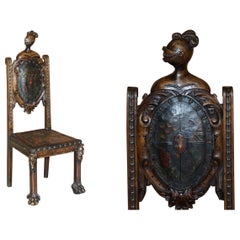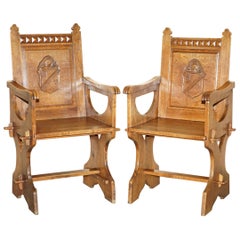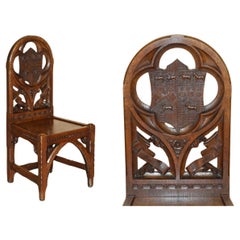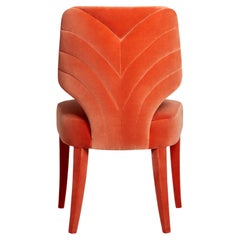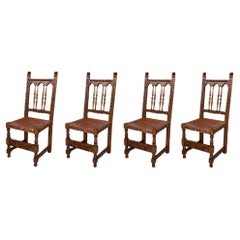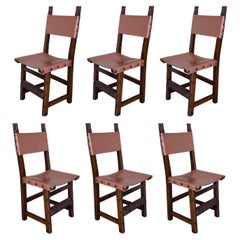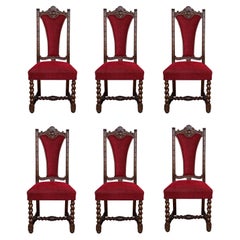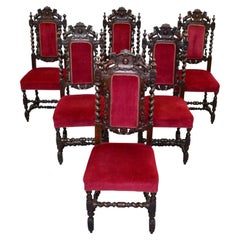
SET OF 6 CARVED CHAIRS WiTH LIONS ON THE BACK ARMORIAL CREST/ COAT OF ARMS
View Similar Items
Want more images or videos?
Request additional images or videos from the seller
1 of 13
SET OF 6 CARVED CHAIRS WiTH LIONS ON THE BACK ARMORIAL CREST/ COAT OF ARMS
Price:$3,145.62
$3,932.03List Price
About the Item
- Dimensions:Height: 44.89 in (114 cm)Width: 18.12 in (46 cm)Depth: 19.3 in (49 cm)Seat Height: 19.69 in (50 cm)
- Sold As:Set of 6
- Style:Jacobean (In the Style Of)
- Materials and Techniques:
- Place of Origin:
- Period:
- Date of Manufacture:19th century
- Condition:Wear consistent with age and use. Minor fading.
- Seller Location:West Sussex, GB
- Reference Number:1stDibs: LU2823329189502
About the Seller
4.7
Platinum Seller
Premium sellers with a 4.7+ rating and 24-hour response times
Established in 2012
1stDibs seller since 2017
2,012 sales on 1stDibs
Authenticity Guarantee
In the unlikely event there’s an issue with an item’s authenticity, contact us within 1 year for a full refund. DetailsMoney-Back Guarantee
If your item is not as described, is damaged in transit, or does not arrive, contact us within 7 days for a full refund. Details24-Hour Cancellation
You have a 24-hour grace period in which to reconsider your purchase, with no questions asked.Vetted Professional Sellers
Our world-class sellers must adhere to strict standards for service and quality, maintaining the integrity of our listings.Price-Match Guarantee
If you find that a seller listed the same item for a lower price elsewhere, we’ll match it.Trusted Global Delivery
Our best-in-class carrier network provides specialized shipping options worldwide, including custom delivery.More From This Seller
View AllEight Hand Carved Armorial Crest Coat of Arms Antique Jacobean Dining Chairs
Located in West Sussex, Pulborough
We are delighted to offer this lovely suite of eight original, early Victorian, hand carved Jacobean revival dining chairs with hand car...
Category
Antique 19th Century English Jacobean Dining Room Chairs
Materials
Leather, Oak
$11,589 Sale Price / set
30% Off
Antique Hand Carved High Back Chair Embossed Painted Armorial Crest Coat of Arms
Located in West Sussex, Pulborough
We are delighted to offer this lovely antique hand carved throne chair with embossed hand painted coat of arms to the back and Knights helmet...
Category
Antique 19th Century English Jacobean Side Chairs
Materials
Leather, Wood
$2,414 Sale Price
30% Off
Pair of Antique Carved English Oak Armchairs with Armorial Crest Coat of Arms
Located in West Sussex, Pulborough
We are delighted to offer for sale this stunning pair of antique English oak hand carved chairs with Armorial coat of arms to the backrests
A good early original pair, hand carve...
Category
Antique 1860s English High Victorian Armchairs
Materials
Oak
$4,087 Sale Price / set
25% Off
ANTIQUE CARVED ENGLISH OAK SIDE HALL CHAIR WITH ARMORIAL CREST COAT OF ARMs
Located in West Sussex, Pulborough
Royal House Antiques
Royal House Antiques are delighted to offer for sale this stunning antique English oak hand carved Hall or Library chair with a lovely Armorial coat of arms to ...
Category
Antique 1890s English Victorian Side Chairs
Materials
Oak
$1,931 Sale Price
20% Off
Fine Antique circa 1800 Hand Carved Royal Armorial Lion from Coat of Arms Crest
Located in West Sussex, Pulborough
We are delighted to offer for sale this stunning circa 1800 hand carved Royal English Armorial Crest / Coat of Arms Lion.
A truly stunning piece,...
Category
Antique Early 1800s English George III Animal Sculptures
Materials
Wood
$3,587 Sale Price
20% Off
Heavily Carved English Antique Victorian Armchair + Coat of Arms Armorial Crest
Located in West Sussex, Pulborough
We are delighted to offer for sale this lovely original Victorian heavily carved English Oak armchair with Royal coat of arms / armorial crest
This is a very decorative piece, it looks like a throne armchair but is of normal proportions as appose to throne chairs which are huge and wholly unusable in a modern context
The chair has ornate carving all over, just look at the very detailed pictured and you will see some...
Category
Antique 1880s English High Victorian Armchairs
Materials
Oak
$2,172 Sale Price
30% Off
You May Also Like
Contemporary Dining Chair with Seaming Details on the Back
By Munna Design Studio
Located in NEW YORK, NY
The front of this dining chair is composed as a verse, with a smooth seat, backrest and legs. The scene is set for the explosion of the chorus, bursting from its quilted back, infuse...
Category
21st Century and Contemporary Portuguese Modern Dining Room Chairs
Materials
Velvet, Wood
19th Set of Four Spanish Carved Chairs with Leather Seat and Back
Located in Miami, FL
A set of 4 Spanish chairs with leather sling seatsand backs on oak and sycamore frames with hand carved decoration. These chairs are true to the Spani...
Category
Antique Late 19th Century Spanish Spanish Colonial Chairs
Materials
Leather, Oak
19th Set of Six Spanish Carved Chairs with Leather Seat and Back
Located in Miami, FL
A set of 6 Spanish chairs with leather sling seatsand backs on oak and sycamore frames with hand carved decoration. These chairs are true to th...
Category
Antique Late 19th Century Spanish Spanish Colonial Chairs
Materials
Leather, Oak
Spanish Carved Walnut Set of Six Chairs with Red Velvet Seat and Back
Located in Miami, FL
Spanish carved walnut set of six chairs with red velvet seat and back
Beautiful set of chairs, very heavy and resistant with carved crest in the back and beautiful Solomonic legs wi...
Category
Early 20th Century Spanish Spanish Colonial Dining Room Chairs
Materials
Velvet, Walnut
$4,780 Sale Price / set
20% Off
Rattan with Arms Chair
Located in Paris, FR
Chair Rattan with Arms all in
natural rattan in clear finish.
Stackable chair.
Category
21st Century and Contemporary Indonesian Chairs
Materials
Rattan
$703 / item
Contemporary Velvet Dining Chair Offered With Nails On The Curve & Back
By Munna Design Studio
Located in NEW YORK, NY
This Chair is the epitome of serenity inducing design. With an embracing silhouette and luxurious deep seat, its sensuous curves and comfortable back perfectly adapt to the body. The...
Category
21st Century and Contemporary Portuguese Modern Dining Room Chairs
Materials
Velvet, Wood
Recently Viewed
View AllMore Ways To Browse
6 Jacobean Dining Chairs
Set Of 6 Cane Back Dining Chairs
Wood Bistro Chair
1800 Mahogany Chairs
1950s Chrome Dining Set
Dining Chair Sabot
Knoll Fiberglass
Memphis Dining Chairs
Monk Dining Chair
Oak Dining Room Suite
Pink Velvet Dining Chair
Victorian Style Dining Chairs
4 Breuer Chair
Portuguese Walnut Dining Room Chairs
Rosewood And Black Leather Dining Chairs
Scalloped Dining Chairs
Set Of 10 French Dining Chairs
Unicorn Chair
